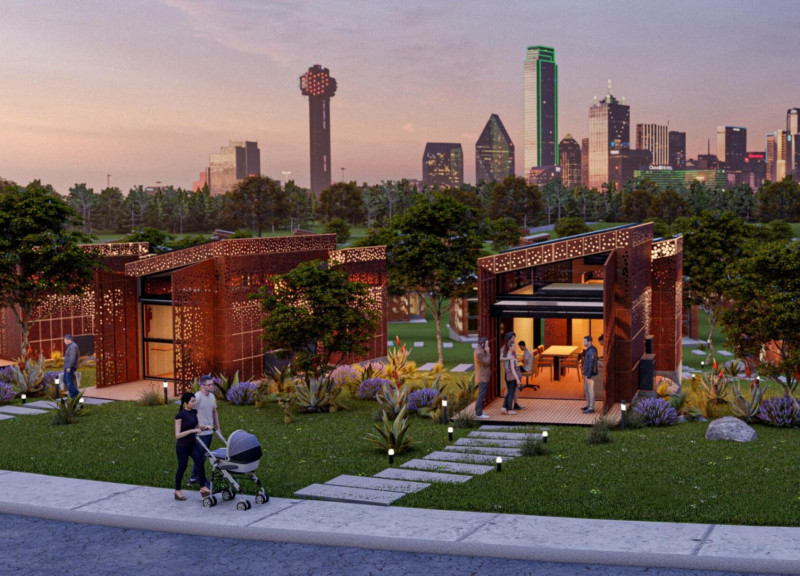5 key facts about this project
The architectural design emphasizes a harmonious relationship between the building and its surroundings. The use of natural materials such as wood, concrete, and glass establishes a dialogue with the environment, allowing the structure to blend seamlessly into its context. The façade features expansive glass panels that invite natural light, creating bright, welcoming interiors while connecting the occupants with the outdoor landscape. This connection is further reinforced by outdoor spaces that encourage interaction and engagement within the community.
One of the most significant aspects of this project is its innovative approach to sustainability. The design incorporates various environmentally friendly strategies, including green roofs, rainwater harvesting systems, and energy-efficient systems. These features not only minimize the project’s ecological footprint but also serve as a model for future developments in the area. The architects calculated energy use and integrated passive solar design principles to create comfortable indoor environments without relying heavily on mechanical systems. This focus on sustainability reflects a broader commitment to responsible architecture, addressing contemporary concerns over climate change and resource management.
The layout of the building is a testament to careful planning and user-oriented design. Common areas are thoughtfully arranged to promote collaboration and interaction among users, while private spaces remain accessible yet distinct. Features such as flexible room configurations support a range of activities, from community gatherings to individual pursuits, ensuring that the design meets the evolving needs of those who occupy the space. The intention to facilitate both collaboration and privacy speaks to a contemporary understanding of how shared spaces can enhance user experience.
Architectural details throughout the project bring an additional layer of depth. The selection of materials not only serves functional purposes but also contributes to the overall aesthetic language of the building. For instance, the use of timber evokes warmth and craftsmanship, while concrete provides structural integrity and versatility. These materials are put together in ways that highlight their inherent qualities, promoting an appreciation for the craft of architecture itself.
The project also references local architectural traditions, which can be seen in its use of texture and scale. By drawing inspiration from the surrounding buildings, the design achieves a sense of place that anchors it within the community. This tactful combination of modern design elements with traditional influences enables the building to resonate emotionally with its users, deepening their connection to the environment.
In terms of innovative design approaches, the project stands out due to its incorporation of smart technology that enhances user convenience and energy efficiency. Automated systems for lighting and heating respond to environmental changes, optimizing comfort while reducing energy consumption. This seamless integration of technology into architecture illustrates the potential for modern design to align with contemporary lifestyles and sustainability goals.
As you explore the project presentation further, take the time to review the architectural plans and sections that offer insight into the spatial dynamics and design intentions. The comprehensive architectural designs demonstrate how the project balances functionality with aesthetic considerations, embodying an architectural vision that is both practical and meaningful. Engaging with these materials will provide a deeper understanding of the architectural ideas that shape this project, inviting further exploration into its multifaceted approach to community-centered design.


























